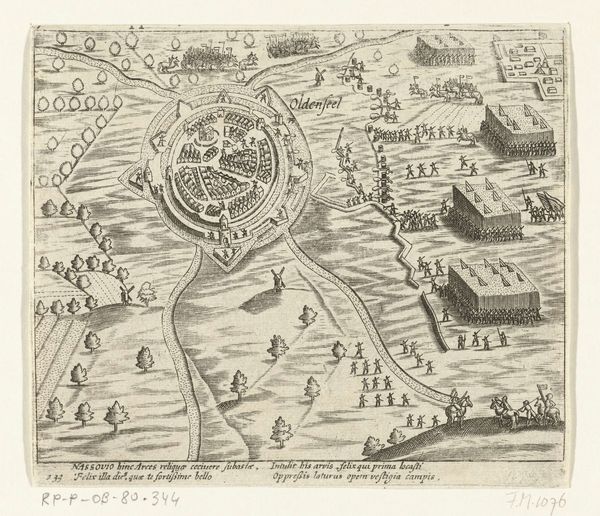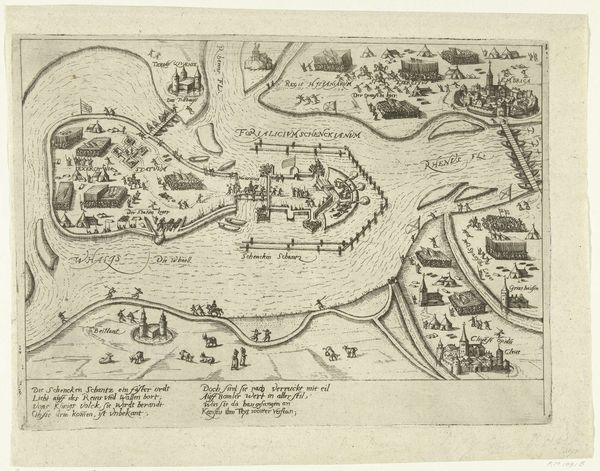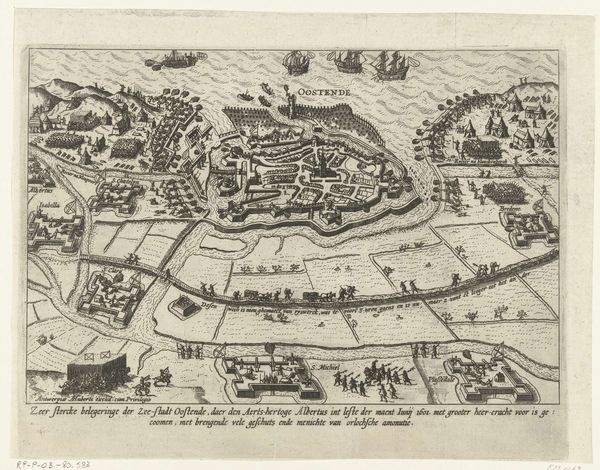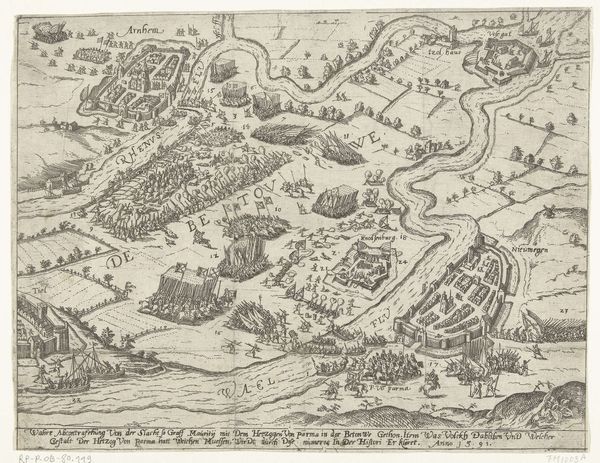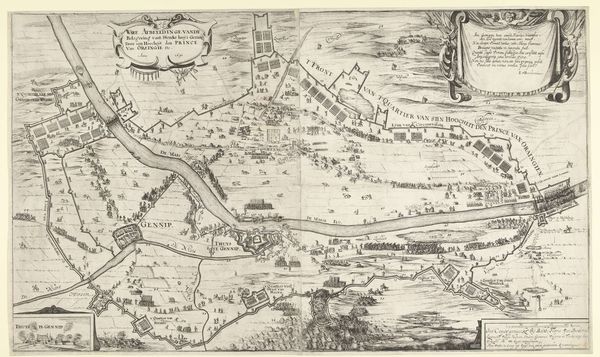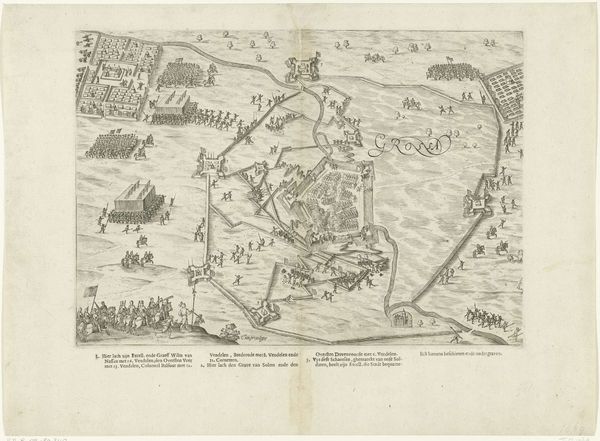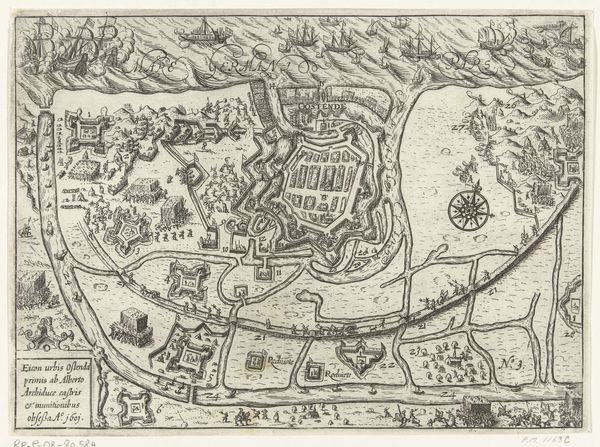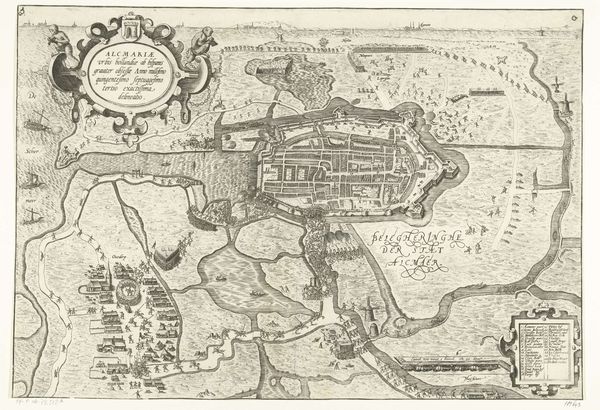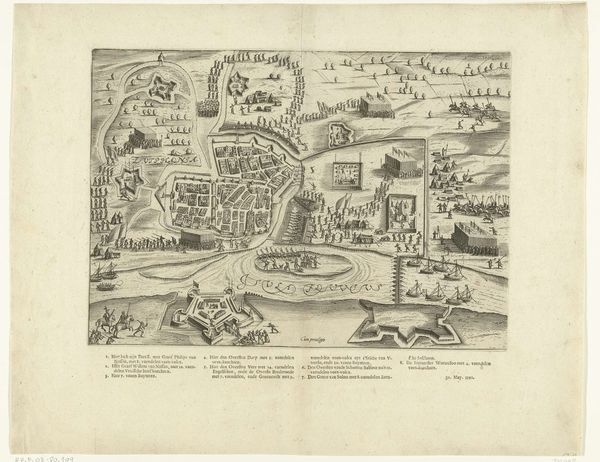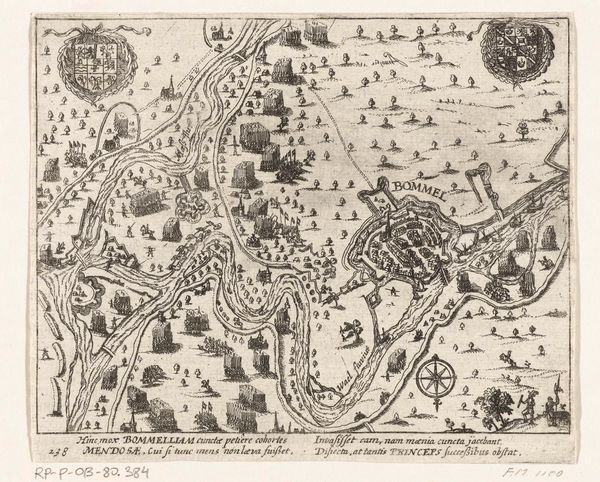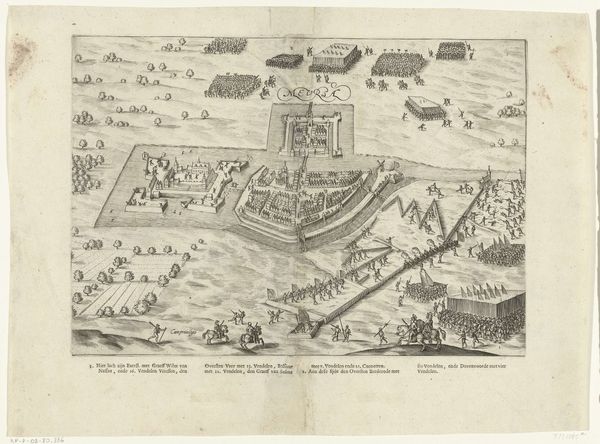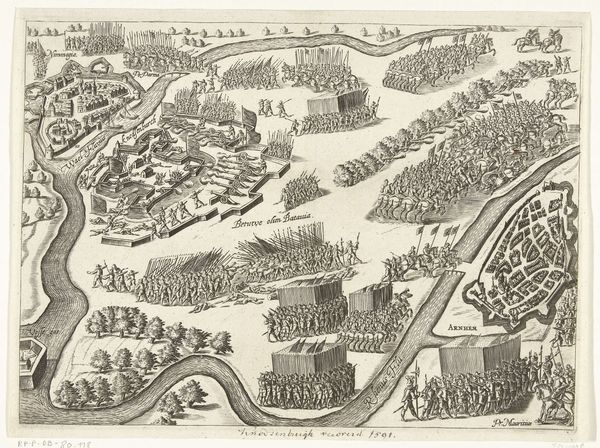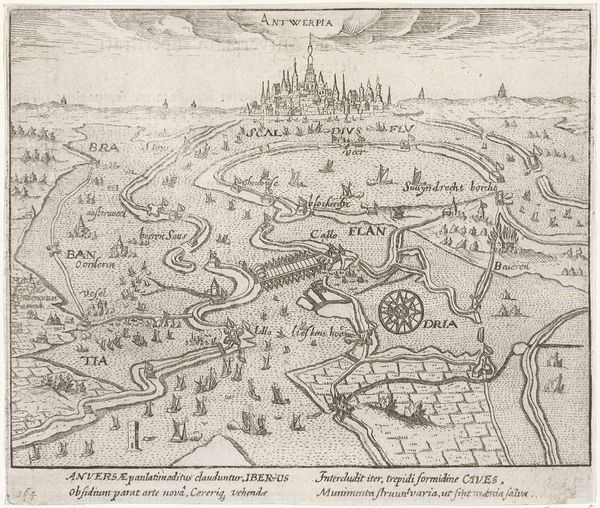
drawing, print, ink, engraving
#
drawing
#
medieval
#
dutch-golden-age
# print
#
pen illustration
#
old engraving style
#
landscape
#
ink
#
sketchbook drawing
#
cityscape
#
history-painting
#
engraving
Dimensions: height 254 mm, width 327 mm
Copyright: Rijks Museum: Open Domain
Curator: This striking image is titled "Verovering van Oldenzaal, 1597," or "Conquest of Oldenzaal, 1597." Pieter Bast created this engraving sometime between 1600 and 1610. It’s currently held at the Rijksmuseum. Editor: It looks more like a meticulous blueprint than a dynamic scene of battle! It feels very ordered and removed, not at all like I would imagine warfare. Almost like a child’s game plan rather than the reality. Curator: Yes, that distanced perspective is characteristic of its time. This print functions as both historical record and political statement. It isn’t simply illustrating a military event. Editor: Right. Tell me more. So, who are the key players here? What socio-political dynamics are at play? Curator: We are looking at the siege of Oldenzaal by the army of the Dutch Republic during the Eighty Years’ War. On the left, we see the troops commanded by Count Willem Lodewijk of Nassau-Dillenburg laying siege to the city on the right. The siege ultimately ended in the capture of Oldenzaal from the Spanish. Editor: So this engraving depicts Dutch victory over Spanish forces? It almost feels celebratory despite the brutal context of war. I am curious, what message did Bast intend to convey? Who was the intended audience? Curator: Remember the Dutch Republic was still a relatively new entity at the time, fighting for its independence. Prints like this played a crucial role in shaping public opinion, solidifying national identity, and celebrating military successes as evidence of God’s favor. It also served as propaganda, reinforcing Dutch power and legitmacy to European leaders. The image subtly normalizes the militarization of Dutch society. Editor: That provides necessary perspective. It’s not just documentation, it’s nation-building through imagery. Looking at this piece, understanding the war through this detached visual account is complicated—but vital. Curator: Indeed. Bast's rendering becomes a tool to build narratives about a nascent Dutch identity during that time. The strategic deployment of ink and line not only portrays a victory but forges a visual foundation for a nation's self-image. Editor: Understanding its creation offers such different insight into our perception of it now. Thanks for helping me view this work through the complex lenses of both artistic expression and political intention.
Comments
No comments
Be the first to comment and join the conversation on the ultimate creative platform.
